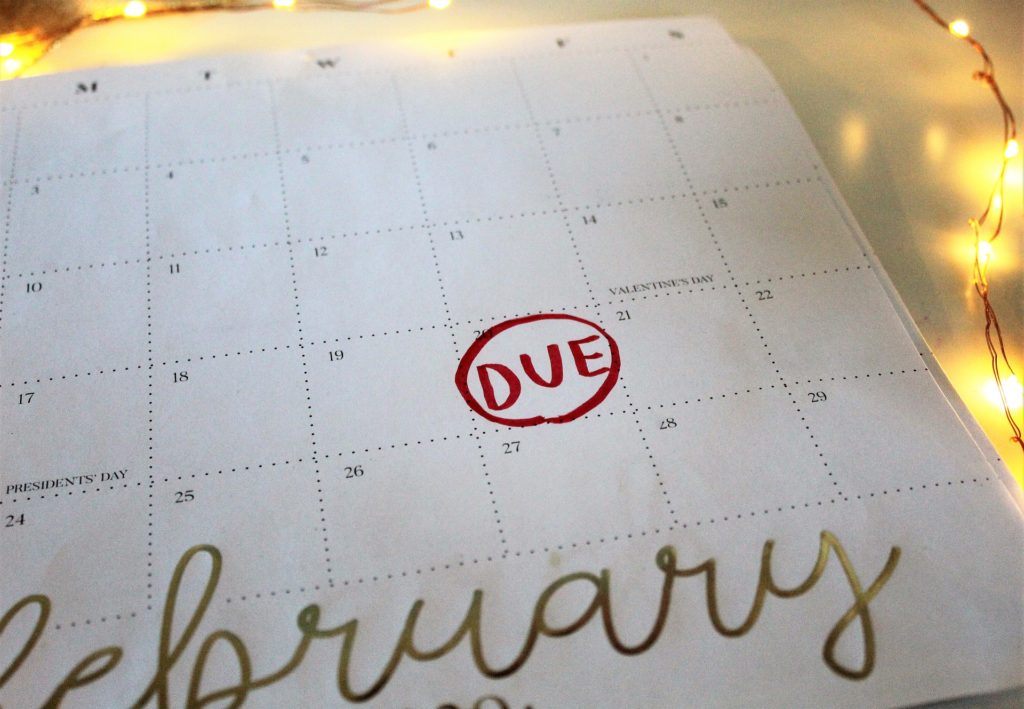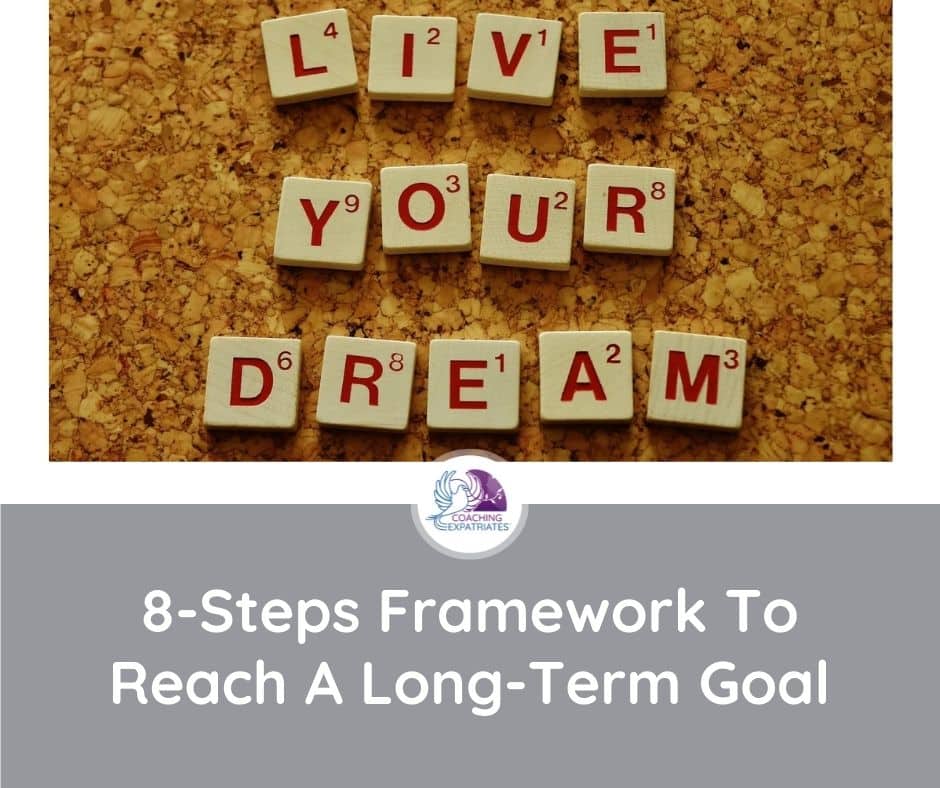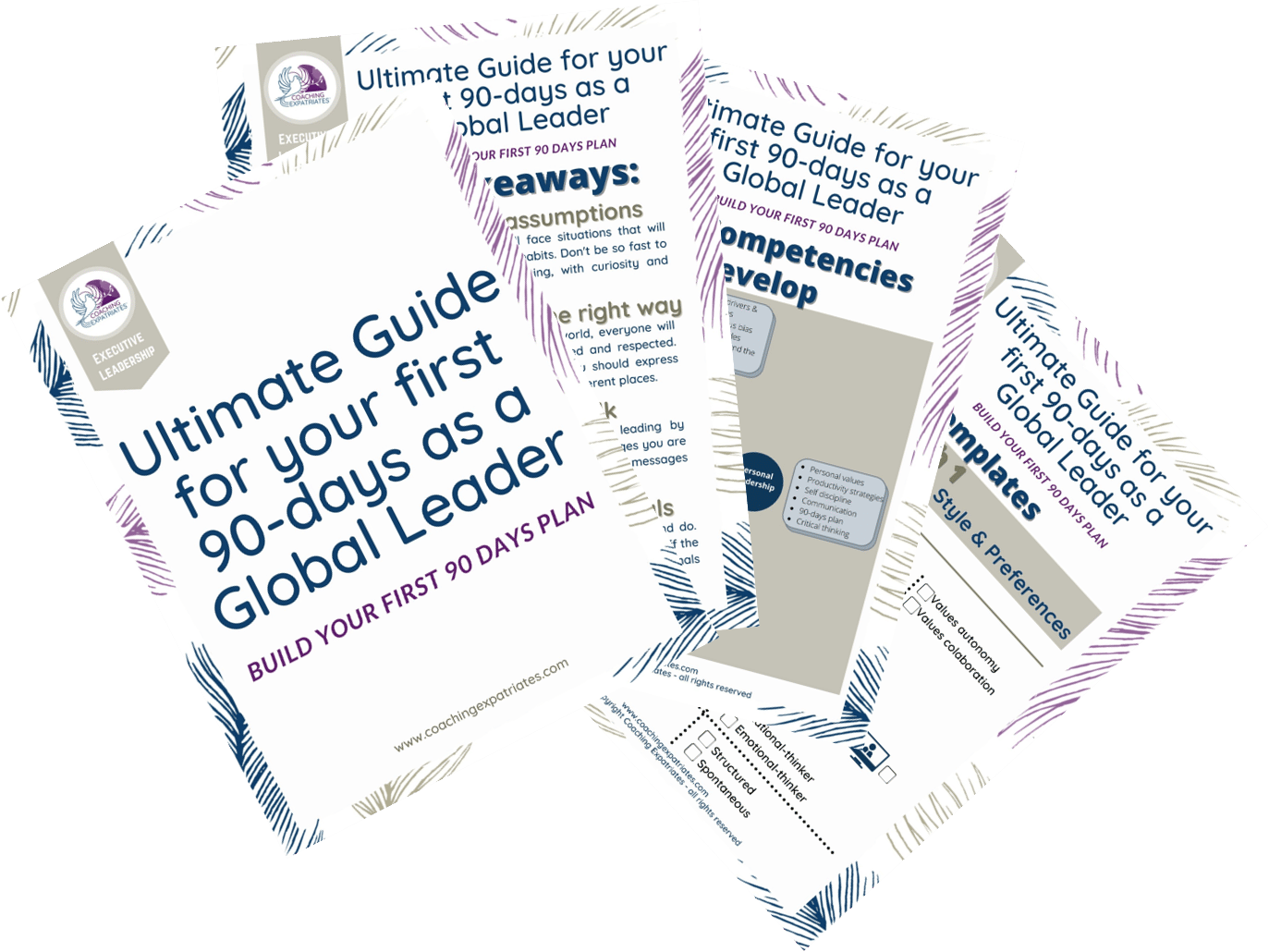A long-term goal seems to be what gives people the most challenging time to work on. And it makes sense. How many things do we have to do every day which would detract our attention from our main long term-goal? How many distractions do we have? What about notifications, small responsibilities, chores? It is never-ending if we start to think about it.
Like I always tell my students and clients, though, if you don’t have a goal and a plan to tackle and accomplish what you want, you are doomed. You are doomed to wish it forever. It will be very difficult to achieve this goal without a plan.

Wishing good things is part of human nature, but elaborating on an idea and planning out the steps on how to get it, is what makes us unique.
In this guide, we want to share with you a framework to help you map out what you want in the long term and how to forge a plan to get it.
Here are a few long-term goals you might have in your personal life:
- Learn how to speak fluently a new language
- Start a family
- Buy your own property
- Become debt-free
- Lose weight and keep it off
- Learn to play a new instrument
- Get or complete a new degree, like an MBA or Ph.D.
Here are a few long-term goals you might have at a career level:
- Experience an international assignment
- Be promoted to a C-suite level
- Start your own business
- Change career paths
- Get hired by a dream company
- Be assigned to your first big multi-functional team
- Be designated to a regional or global role
These are all long-term goals that not only need planning but also might require some financial planning in order to achieve them. And because they are a long-term goal, they will also definitely require a lot of discipline and a clear roadmap of what to follow to accomplish that goal. You probably might relate with one or even a few of them from the above list.
Here is a framework to help you reach your long-term goal.
Step 1: Connect your long-term goal with your Core-Values
After reading some of the long-term goal examples we shared above, you might be thinking, “yeah, I really wanted to accomplish that.” Maybe you want to accomplish more than one of those. And I am sure some of you already started to beat yourself up because you did NOT achieve these goals yet. You might be even slandering yourselves in your headspace right now. “You didn’t accomplish any of these things. What a failure you are.” Or “How many times have you tried and failed? You are no good.”
Here is a secret about motivation: if you don’t really enjoy (or value) what you are seeking, you’ll never really feel motivated to get that thing done. For example, you might think you want to own a property because all successful people do. But this goal is not REALLY related to ANY of your core-values, so of course, you’ll never focus on this goal.
So the first step in the process of achieving a long-term goal is connecting that goal to your Core-Values.
Not sure what your core values are? We outlined 3 powerful strategies for you to uncover your Core-Values. So, if you don’t know what they are yet, use one of those strategies to discover them first.
Once you have a clear picture of your key 5 or 6 core values, the next thing you have to do is connect your goal with one of your key core-values.
For example, let’s say you want to get a Ph.D. degree. When you accomplish that, which value will be satisfied with that? Maybe it is because you value “Knowledge” or perhaps because you value “Recognition.”
If your goal is not connected to any of your core values, the chances are that you will get lost in a million distractions we have in life and never get it done.
The final thing you have to do in this step is to create a motivational anchor. For example, you can use this template:
Because I value [CORE VALUE], once I accomplish [GOAL], I will feel empowered, satisfied, and [POWER FEELING FOR YOU].
Put it somewhere of prominence in your home. Stick it on your fridge. Or in your bathroom or on top of your alarm clock. Make it your background picture on your phone. Make sure you have it somewhere where you will bump at it often.
Step 2: Outline your long-term goal into concrete steps or tollgates
Now that you have a clear picture of what you want to accomplish, why, and how it will make you feel, it’s time to start outlining a plan.
When people think about goal setting, their minds immediately connect this with the SMART Goals Setting (Specific, Measurable, Achievable, Relevant, Time-bound). Maybe because it is one of the most goal-setting systems or because it is the most widely spread.
However, some people can’t relate so well with SMART goals, and maybe it is because smart goals are perfect for shorter assignments and tasks.
A long-term goal require a little more work than merely setting a SMART goal. And you can start doing that by using the WOOP Process to double down on the motivational driver you defined in step 1.
W- Wish: What is your true wish with that goal?
O- Outcome: Your wish came true. What is it like? Where will you be? Who will you be with? What will you do next when it happens?
O- Obstacles: what are the biggest obstacles you’ll have to face? Think about inner obstacles (such as fear, limiting beliefs, etc.) and outer obstacles (money constraints, time restrictions, health, support, etc.)
P- Plan: how will you work through each of these obstacles? Write down a plan for each obstacle. For each obstacle, you can also use the SMART goal methodology to create specific outcomes, that are measurable and timebound, to facilitate your thinking process.
Step 3: Break up your long-term goal and tollgates into short-term tasks
In this step, you will elaborate a little further on your plan. Although creating a plan around mitigating obstacles is already powerful enough, you might still feel overwhelmed.
Studies show that the more granular our plans are, the more confident we feel. And that’s quite easy to explain why: when we have a step-by-step process to follow, we won’t experience something called “decision fatigue.”

The more precise you are about what steps you need to take, the higher your chances of achieving a goal. Get your initial plan from step 2 and break them into little tasks. You can use these questions to help you break them up:
- If I need to complete [TASK] to get this done, what resources do I need? (here are some categories for you: financial, time, health, objects, people, materials, knowledge, contacts)
- To get [TASK] done, what trade-offs will I have to make?
- If I were to do [TASK], who out there would be willing to help me?
My recommendation is always to break up a plan in tollgates, and then within the tollgates, break it up into smaller tasks and subtasks —the more granular, the better. You might not know that level of granularity, for now, don’t fret. Do as much as you can now.
For example, in the Ph.D. case, we could think about the following tollgates: 1) submitting recommendation, hours, and other requirements for application; 2)getting accepted to the desired program; 3) Research Proposal acceptance; 4) finalizing your course requirements; 5) Thesis presentation and acceptance. 6) Graduating
As you can see, for each of these tollgates, you will require time, money planning, and an infinitude of other smaller tasks to get each of these tollgates done. The fuller your roadmap plan is, the better and more confident you will feel. And you won’t have to experience the decision-fatigue by all the time having to think and decide what to do next.
Step 4: Define your roadmap timeline from the end backward
One thing that is very powerful and quite useful for many long-term projects is working from the end backward. On many wedding websites, you can see many plans like this, because they are mighty to help you be on top of things.
Here is a general framework of how an end-backward program looks like:
- What to do on the big day
- What to do 1 week before
- What you should do 1 month before
- What you should do 3 months before
- What you should do 6 months before
- What you should do 12 months before
- What you should do today

In this step, you have to take your tasks and subtasks created in step 3 and allocate them within a timeline. You can use the timeline above or come up with your own timeline. Exchange the “Big Day” for your tollgate name. By doing this, you not only will have an even more straightforward roadmap, but you will have a clear picture of how feasible this timeline is for you.
Some tollgates won’t require a full 12 months. In our Ph.D. example, you might need only 3 months to collect all the requirements for application. Or maybe 6, depending on what you are applying for. Let’s say it is 3.
Step 5: Use a time-blocking technique to set the pace of your actions
Time blocking is a time management method that requires you to divide your day into blocks of time. Each block is dedicated to getting one specific task done. It is a powerful technique. When you bundle that with a prioritization schedule, you skyrocket your productivity and how you get things faster and smarter. If you want to learn more about the prioritization schedule and time blocking, make sure to enroll in our free course here.
So here is how it works. Now you have your plan from step 4, as granular as possible. You will start by selecting your plan’s tasks and scheduling them in your calendar. Here is what you are going to ask yourself for each of the tollgates: what tasks can I schedule already and get done?
In the Ph.D. example, you can decide that you will block 3 hours every Friday, from 2 to 5 pm, to work on actions from tollgate one. Next Friday, you will work on action [SUBTASK]. Let’s say your subtask is contacting people to request recommendation letters.
What works best for most people is to schedule always 1 month ahead. Don’t forget to schedule a time, at least a week before, to plan for your next month for this specific uber goal. You don’t have to plan your entire month if you don’t want to. What we are recommending is for you to schedule all the things related to getting this goal accomplished.
Step 6: Define a priority system to tackle emergencies and surprises
Here is the deal, folks: sh*t happens. There is always something that might come to your attention and will compel you to blow up all your schedule. If you don’t have an extremely clear picture of what your priorities are, you might end up giving in and changing all your plans. Don’t get me wrong. Sometimes it is inevitable, and we will have to change our plans, and there is no shame in doing that.
But what I see happening with most people is that they quickly lose focus because they don’t have their priorities straight. So having a prioritization system is critical. If you want to learn more about how to put your priority system in place, enroll in our free course here.
One technique used in these cases is quick scenario analysis. Let’s say it’s Friday 2 pm, and you just noticed your garage door is not working anymore. You have the option to tackle what your schedule has – work on the recommendations from the example above – or change plans and get the door fixed. Here is a question you’ll make to analyze the scenarios.
- If I change my plans and [ACT ON EMERGENCY], what will it cost me in my [PROJECT NAME]?
- If I don’t change my plans and still work on [SCHEDULED TASK], what will happen if I delayed [ACT ON EMERGENCY] to my next available free time?
These are some simple questions that might help you decide on the spot what to do. Sometimes when we see we can (or cannot) very well delay certain things, it’s easier to resist procrastinating on the current task at hand.
Step 7: Have an accountability partner to help with your mental game
The mental game is the frame of mind you have when you are about to perform (or is performing) something important. Athletes know it very well: when you don’t have the right mental game, your performance will be way lower than your potential.
So what do you need to display in terms of mental game to achieve a long-term goal? Here are some of the things you’ll need in your mental game:
- Resilience
- Discipline
- Ability to silence the inner-critic
- Success mindset
- Confidence
- Positive attitude
We can all display these things, for sure. But sometimes we don’t. And we falter in these things on different occasions, but it can often happen: when we are tired; when we met a roadblock; when things become difficult; when we have a negative progress feeling effect, among others.
The best way to tackle these situations and get back to your center is by having an accountability partner. I will be honest. Friends and relatives will not work reliably for long-term projects. Nobody will be as vested as you are in such a long term project. Your accountability partner has to be there for you when these events hinder your mental game. And they have to help you quickly turnaround and be in your best game again.
So the best way here is to hire someone, as a professional coach, to be your project’s accountability partner. You want to get things done, and you have to have a partner who is as vested as you are.
Step 8: Design a support system for your long-term goal
A support system means things that will help you achieve things faster and better. By definition, they will be a support, so you don’t necessarily need them. But the fact that you have them will make your life easier. So here are a few things for you to consider in your support system:

- A workflow management system to track tasks and your progress (read about a free option and idea here)
- A group of people to cheer you on when you feel down
- An accountability partner to push you when you are procrastinating or lift you when you are faltering
- A reward system for each tollgate
- Venting options for when you are angry and frustrated (preferably, one not related to projecting onto your spouse, kids, or dog)
- Daily or weekly stress relievers
Final Remarks
As you can see, anyone can achieve anything big. Is it easy? No, it’s not. It will require a lot of planning, a lot of energy, and effort. But it’s doable. All you need is to set your mind around it, plan it, and then move your butt. You can do it. If anyone says anything different, it’s because they are complete jerks who are not interested in seeing you succeed or is someone who has no idea you got your hands in this step-by-step framework. Yes, you can do it. Go for it. And if you need a little hand, we can be your accountability partners; give us a call. We’d love to prove those jerks wrong, too, by the way.
If you liked this post, consider subscribing to our newsletter by using the form below. We send only one email per week, we never share your information, and we aim our content towards the global leader who wants to succeed. We share information around productivity, leadership skills, and good habits to become a 3i global leader.







